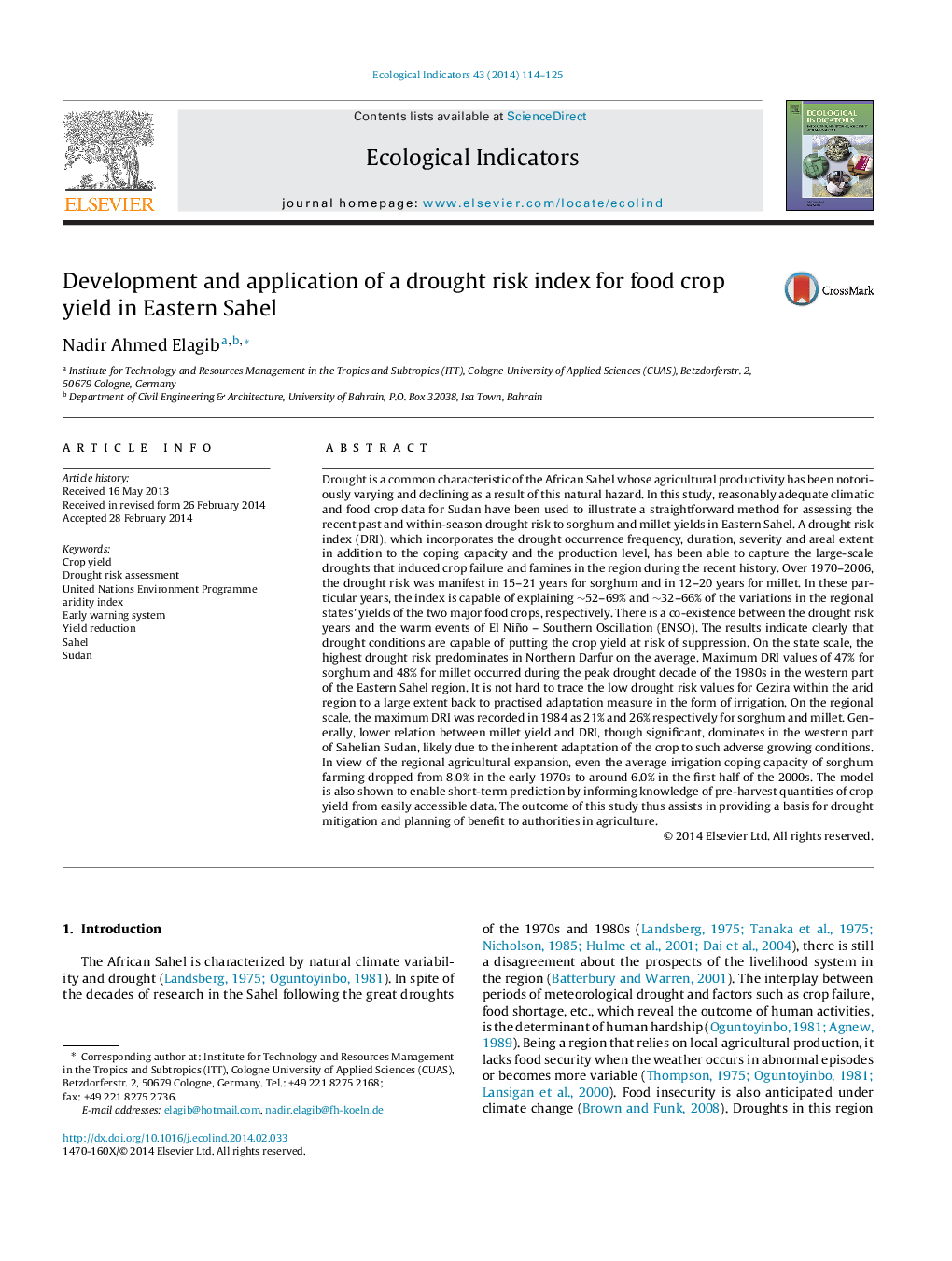| کد مقاله | کد نشریه | سال انتشار | مقاله انگلیسی | نسخه تمام متن |
|---|---|---|---|---|
| 4373163 | 1617158 | 2014 | 12 صفحه PDF | دانلود رایگان |
• Drought risk to crop yield in Eastern Sahel is illustrated by easily accessible data.
• The index involves four drought components, coping capacity and production level.
• Yield reductions during the recent decades are clearly associated with drought risk.
• Provision of an irrigation coping capacity as in Gezira Scheme reduces drought risk.
• The index can be used by the concerned authorities in their protection plans.
Drought is a common characteristic of the African Sahel whose agricultural productivity has been notoriously varying and declining as a result of this natural hazard. In this study, reasonably adequate climatic and food crop data for Sudan have been used to illustrate a straightforward method for assessing the recent past and within-season drought risk to sorghum and millet yields in Eastern Sahel. A drought risk index (DRI), which incorporates the drought occurrence frequency, duration, severity and areal extent in addition to the coping capacity and the production level, has been able to capture the large-scale droughts that induced crop failure and famines in the region during the recent history. Over 1970–2006, the drought risk was manifest in 15–21 years for sorghum and in 12–20 years for millet. In these particular years, the index is capable of explaining ∼52–69% and ∼32–66% of the variations in the regional states’ yields of the two major food crops, respectively. There is a co-existence between the drought risk years and the warm events of El Niño – Southern Oscillation (ENSO). The results indicate clearly that drought conditions are capable of putting the crop yield at risk of suppression. On the state scale, the highest drought risk predominates in Northern Darfur on the average. Maximum DRI values of 47% for sorghum and 48% for millet occurred during the peak drought decade of the 1980s in the western part of the Eastern Sahel region. It is not hard to trace the low drought risk values for Gezira within the arid region to a large extent back to practised adaptation measure in the form of irrigation. On the regional scale, the maximum DRI was recorded in 1984 as 21% and 26% respectively for sorghum and millet. Generally, lower relation between millet yield and DRI, though significant, dominates in the western part of Sahelian Sudan, likely due to the inherent adaptation of the crop to such adverse growing conditions. In view of the regional agricultural expansion, even the average irrigation coping capacity of sorghum farming dropped from 8.0% in the early 1970s to around 6.0% in the first half of the 2000s. The model is also shown to enable short-term prediction by informing knowledge of pre-harvest quantities of crop yield from easily accessible data. The outcome of this study thus assists in providing a basis for drought mitigation and planning of benefit to authorities in agriculture.
Journal: Ecological Indicators - Volume 43, August 2014, Pages 114–125
